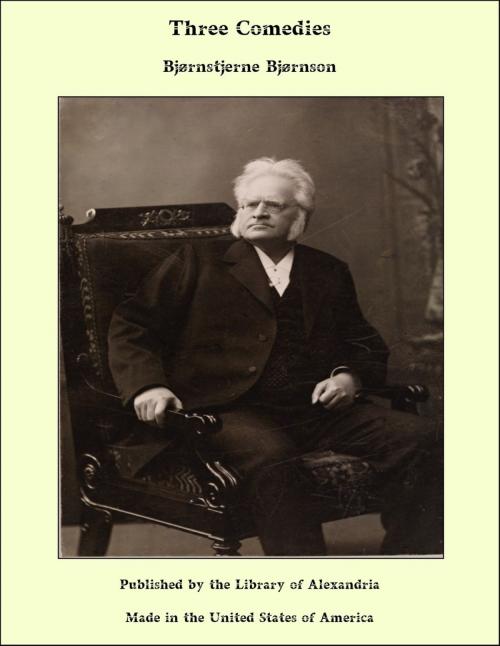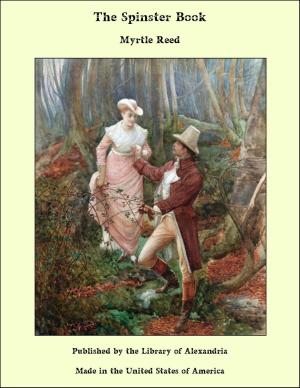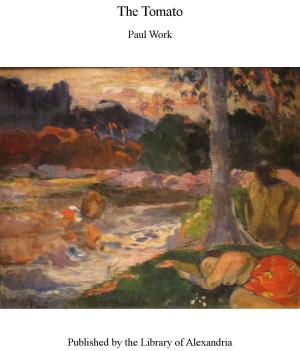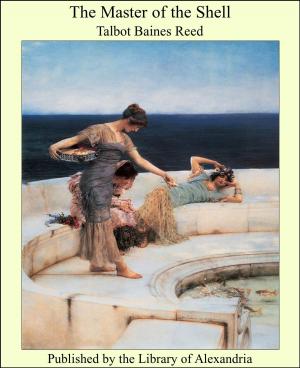| Author: | Bjørnstjerne Bjørnson | ISBN: | 9781465607188 |
| Publisher: | Library of Alexandria | Publication: | March 8, 2015 |
| Imprint: | Language: | English |
| Author: | Bjørnstjerne Bjørnson |
| ISBN: | 9781465607188 |
| Publisher: | Library of Alexandria |
| Publication: | March 8, 2015 |
| Imprint: | |
| Language: | English |
It was in surroundings such as this, and with scarcely any playfellows, that Björnstjerne Björnson spent the first six years of his life; and the sturdy independence of his nature may have owed something to the unaccommodating life of his earliest days, just as the poetical impulse that was so strong in his developed character probably had its beginnings in the impressions of beauty he received in the years that immediately followed. For, when he was six, a welcome change came. His father was transferred to the tranquil pastorate of Naes, at the mouth of the Romsdal, one of the fairest spots in Norway. Here Björnson spent the rest of his childhood, in surroundings of beauty and peacefulness, going to school first at Molde and afterwards at Christiania, to pass on later to the Christiania University where he graduated in 1852. As a boy, his earliest biographer tells us, he was fully determined to be a poet—and, naturally, the foremost poet of his time!—but, as years passed, he gained a soberer estimate of his possibilities. At the University he was one of a group of kindred spirits with eager literary leanings, and it did not take him long to gain a certain footing in the world of journalism. His work for the first year or two was mainly in the domain of dramatic criticism, but the creative instinct was growing in him. A youthful effort of his—a drama entitled Valborg—was actually accepted for production at the Christiania theatre, and the author, according to custom, was put on the "free list" at once. The experience he gained, however, by assiduous attendance at the theatre so convinced him of the defects in his own bantling, that he withdrew it before performance—a heroic act of self-criticism rare amongst young authors. His first serious literary efforts were some peasant tales, whose freshness and vividness made an immediate and remarkable impression and practically ensured his future as a writer, while their success inspired him with the desire to create a kind of peasant "saga." He wrote of what he knew, and a delicate sense of style seemed inborn in him. The best known of these tales are Synnöve Solbakken (1857) and Arne (1858). They were hailed as giving a revelation of the Norwegian character, and the first-named was translated into English as early as 1858. He was thus made known to (or, at any rate, accessible to) English readers many years before Ibsen, though his renown was subsequently overshadowed, out of their own country, by the enormous vogue of the latter's works. Ibsen, too, has been far more widely translated (and is easier to translate) into English than Björnson. Much of the latter's finest work, especially in his lyrical poetry and his peasant stories, has a charm of diction that it is almost impossible to reproduce in translation. Ibsen and Björnson, who inevitably suggest comparison when either's work is dealt with, were closely bound by friendship as well as admiration until a breach was caused by Björnson's taking offence at a supposed attack on him in Ibsen's early play The League of Youth, Björnson considering himself to be lampooned in the delineation of one of the characters thereof. The breach, however, was healed many years later, when, at the time of the bitter attacks that were made upon Ibsen in consequence of the publication of Ghosts, Björnson came into the field of controversy with a vigorous and generous championing of his rival.
It was in surroundings such as this, and with scarcely any playfellows, that Björnstjerne Björnson spent the first six years of his life; and the sturdy independence of his nature may have owed something to the unaccommodating life of his earliest days, just as the poetical impulse that was so strong in his developed character probably had its beginnings in the impressions of beauty he received in the years that immediately followed. For, when he was six, a welcome change came. His father was transferred to the tranquil pastorate of Naes, at the mouth of the Romsdal, one of the fairest spots in Norway. Here Björnson spent the rest of his childhood, in surroundings of beauty and peacefulness, going to school first at Molde and afterwards at Christiania, to pass on later to the Christiania University where he graduated in 1852. As a boy, his earliest biographer tells us, he was fully determined to be a poet—and, naturally, the foremost poet of his time!—but, as years passed, he gained a soberer estimate of his possibilities. At the University he was one of a group of kindred spirits with eager literary leanings, and it did not take him long to gain a certain footing in the world of journalism. His work for the first year or two was mainly in the domain of dramatic criticism, but the creative instinct was growing in him. A youthful effort of his—a drama entitled Valborg—was actually accepted for production at the Christiania theatre, and the author, according to custom, was put on the "free list" at once. The experience he gained, however, by assiduous attendance at the theatre so convinced him of the defects in his own bantling, that he withdrew it before performance—a heroic act of self-criticism rare amongst young authors. His first serious literary efforts were some peasant tales, whose freshness and vividness made an immediate and remarkable impression and practically ensured his future as a writer, while their success inspired him with the desire to create a kind of peasant "saga." He wrote of what he knew, and a delicate sense of style seemed inborn in him. The best known of these tales are Synnöve Solbakken (1857) and Arne (1858). They were hailed as giving a revelation of the Norwegian character, and the first-named was translated into English as early as 1858. He was thus made known to (or, at any rate, accessible to) English readers many years before Ibsen, though his renown was subsequently overshadowed, out of their own country, by the enormous vogue of the latter's works. Ibsen, too, has been far more widely translated (and is easier to translate) into English than Björnson. Much of the latter's finest work, especially in his lyrical poetry and his peasant stories, has a charm of diction that it is almost impossible to reproduce in translation. Ibsen and Björnson, who inevitably suggest comparison when either's work is dealt with, were closely bound by friendship as well as admiration until a breach was caused by Björnson's taking offence at a supposed attack on him in Ibsen's early play The League of Youth, Björnson considering himself to be lampooned in the delineation of one of the characters thereof. The breach, however, was healed many years later, when, at the time of the bitter attacks that were made upon Ibsen in consequence of the publication of Ghosts, Björnson came into the field of controversy with a vigorous and generous championing of his rival.















